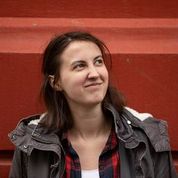
The first rule about Combat Arts? You don’t talk about Combat Arts… no wait, that’s ridiculous, because it’s exactly what I’m about to do. I mean, what better way to get the blood pumping and feel safer in your own body? My newest foray into fierce fighting against mental and physical fatigue has given me some fascinating insight into the world of friendly fistycuffs. I sat down with Hákon Bragi Magnússon, one of the teachers in Iceland Combat Arts aka Impact Combat Sports Academy, to learn more about the classes they offer.
The two big names on the Iceland Combat Arts (ICA) programme are Shin Gi Tai Kempo and Lethwei. Both types of fighting have real world circumstances in mind, with Shin Gi Tai Kempo trainees including people working in security, and Lethwei being practised “bareknuckle”. Because as Hákon explains: “in a street fight you don’t have your equipment, your gloves, gum shields etc.” These lessons prepare you for the extreme case.
Lethwei can be seen as something of a precursor to Thai boxing. “But there’s no points or scoring system,” says Hákon. “You win by knockout and knockout only. The rules are very basic: no eye-gouging, no punching the throat or genitals, everything else is fair game. It’s fun!” Sure sounds like it! Though of course, the actual training is done safely and with a lot of care and discipline.
“There’s a fight, flight, or freeze response, and the freeze is very dangerous.”
Hákon is a self-defence specialist with personal safety at the core of his training. “That ranges from defence against blade attacks, to clubs and guns — whatever, really,” he explains. “It also includes psychological prep. There’s a fight, flight, or freeze response, and the freeze is very dangerous. We try to minimise the possibility of freezing up. That kind of psychological training I have to do carefully. People respond differently. I’ve had students who are dealing with PTSD from previous attacks, for instance, so the training has to be a bit selective at times. People are warned ahead of time if they want to participate. But they can’t be warned too much, because then they know what’s going to happen and it doesn’t work.” As well as group sessions, solo lessons are also available — although they’re more expensive since the training hall needs to be rented — and Hákon also goes to people’s homes to go over safety issues with them individually.
Hákon originally got interested in combat sports twelve years ago, when he was thinking about becoming a bouncer but, frankly, did not know how to fight properly. He started learning and training with Krav Maga, and eventually ended up at Iceland Combat Arts. “But because that’s incorrect grammar, and that seriously annoyed my partner, we changed the name to Impact Combat Sports Academy,” says Hákon.
In terms of the teaching itself, Hákon likes to be at ease with his students, foregoing some traditional aspects such as bowing, saluting, or titles. “My students don’t call me master,” he says. “It’s ‘hey, you’ if they forget my name, or they throw something at me. I’m not holier than thou, and I can be wrong. If something we train doesn’t make sense, people can just ask me, and I’ll explain it. If it doesn’t make sense, we’ll test it, and if it still doesn’t work it’s scrapped — simple as that. I’ve cut off a large portion of what we used to do because we did it for traditional purposes, under an association in Belgium. These traditions have their place, and they are good for discipline and teaching kids — but I’m not teaching kids.”
“My students don’t call me master.”
While it’s true that any form of martial art and combat sport requires discipline, there’s also an element of simple fun to it — both in terms of physicality, and the challenge of mastery. “It’s fun, and it’s difficult!” says Hákon. “We live pretty easy lives, and Lethwei is hard — and people like a challenge. People get to learn something new that’s both practical and, for me, plain fun. We try to have fun in training, we joke around, and the point is to both learn something and have fun with the people you are learning it with. I’m very lucky to have my teachers and students — what makes it a good place is that it has good people.”
Read more from the fringes here.


















